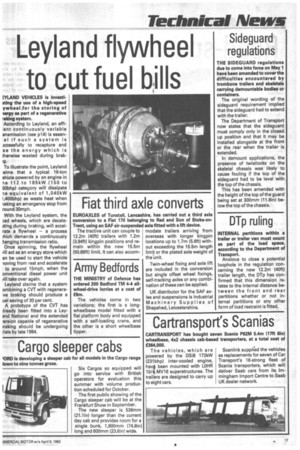Leyland flywheel to cut fuel bills
Page 19

If you've noticed an error in this article please click here to report it so we can fix it.
EYLAND VEHICLES is investisting the use of a high-speed ywheel,for the storing of iergy as part of a regenerative raking system.
According to Leyland, an effient continuously variable ansmission (see p14) is essenal if such a system is Jccessfully to recapture and se the energy which is therwise wasted during brakpg.
To illustrate the point, Leyland aims that a typical 16-ton ehicle powered by an engine in le 112 to 185kW (150 to 50bhp) category will dissipate le equivalent of 1,040 kW 1,400bhp) as waste heat when 'taking an emergency stop from round 30mph.
With the Leyland system, the )ad wheels, which are deceleyting during braking, will accelrate a flywheel — a process thich demands a continuously nanging transmission ratio.
Once spinning, the flywheel fill act as an energy store which an be used to start the vehicle loving from rest and accelerate to around 15mph, when the onventional diesel power unit ;ill take over again.
Leyland claims that a system ombining a CVT with regenerave braking should produce a uel saving of 30 per cent.
A prototype of the CVT has Ilready been fitted into a Ley3nd National and the extended rersion capable of regenerative iraking should be undergoing rials by late 1984.




































































































